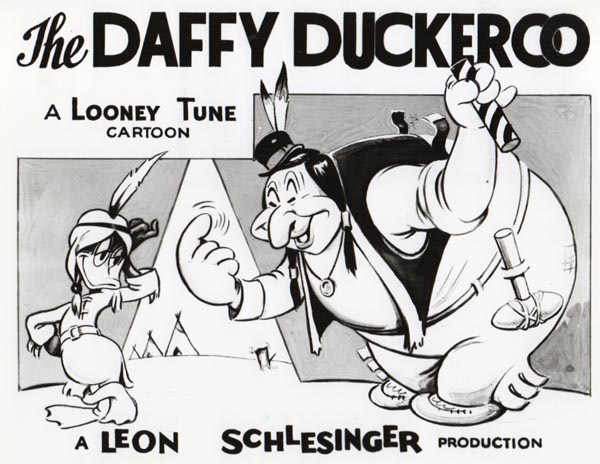
This week, I would like to present another idea for a column I have wanted to write for Cartoon Research — individual profiles on different animators. This week’s post profiles Norm McCabe, an overlooked figure who worked in a long, varied career in animation, as you will see here.
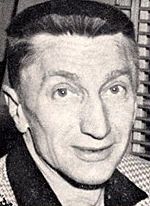 Born on February 10, 1911 in Newcastle upon Tyne, England, Norm McCabe’s family moved to Butte, Montana in the United States two years later. In 1917, the family relocated to Tacoma, Washington, where McCabe spent much of his childhood and adolescence. He soon developed an artistic career in Tacoma as a theater lobby artist, painting posters and banners. After he felt the effect of the Depression, he moved to Los Angeles to seek more lobby poster work, which became impractical. Later, he came across Hugh Harman and Rudy Ising’s studio, which released Looney Tunes and Merrie Melodies under producer Leon Schlesinger, and was hired as an in-betweener around 1932.
Born on February 10, 1911 in Newcastle upon Tyne, England, Norm McCabe’s family moved to Butte, Montana in the United States two years later. In 1917, the family relocated to Tacoma, Washington, where McCabe spent much of his childhood and adolescence. He soon developed an artistic career in Tacoma as a theater lobby artist, painting posters and banners. After he felt the effect of the Depression, he moved to Los Angeles to seek more lobby poster work, which became impractical. Later, he came across Hugh Harman and Rudy Ising’s studio, which released Looney Tunes and Merrie Melodies under producer Leon Schlesinger, and was hired as an in-betweener around 1932.
Soon after, McCabe was promoted to full animator in Frank Tashlin’s unit by 1936. He was shifted when Bob Clampett and Chuck Jones assisted Ub Iwerks to complete two Porky Pig cartoons (Porky and Gabby, Porky’s Super Service) at his Beverly Hills studio. When Clampett received his own directorial unit, Leon Schlesinger assigned business manager and brother-in-law Ray Katz as the head of a separate unit to produce the black-and-white Looney Tunes, known as “the Katz unit.” There, McCabe became one of Clampett’s key animators. According to Mark Kausler’s sharp observations, McCabe was usually assigned to dialogue scenes and often tilted characters’ heads in difficult angles while they spoke in the Clampett films.
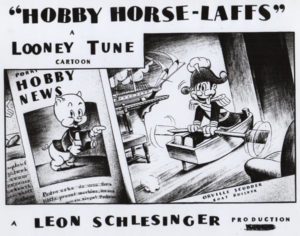 Around 1940, Clampett took ill and briefly went on sick leave, with two Porky Pig cartoons (The Timid Toreador and Porky’s Snooze Reel) left unfinished. The studio entrusted McCabe to complete the directorial duties—hence the co-director credit under their main titles. McCabe continued to animate at the “Katz unit” in the early 1940s until Tex Avery was suspended from the studio in 1941, and Clampett inherited his animators and directed the color Merrie Melodies. McCabe was given his own unit consisting of Clampett’s former animators (John Carey, Vive Risto, Cal Dalton, Izzy Ellis) and continued production on the black-and-white Looney Tunes. His first solo directorial effort was the Porky Pig short Robinson Crusoe, Jr., released in October 1941. Soon after McCabe became a director, his unit moved into the main Warners building at Fernwood and Van Ness—at the end of 1941 or early 1942—disbanding the “Katz unit” altogether.
Around 1940, Clampett took ill and briefly went on sick leave, with two Porky Pig cartoons (The Timid Toreador and Porky’s Snooze Reel) left unfinished. The studio entrusted McCabe to complete the directorial duties—hence the co-director credit under their main titles. McCabe continued to animate at the “Katz unit” in the early 1940s until Tex Avery was suspended from the studio in 1941, and Clampett inherited his animators and directed the color Merrie Melodies. McCabe was given his own unit consisting of Clampett’s former animators (John Carey, Vive Risto, Cal Dalton, Izzy Ellis) and continued production on the black-and-white Looney Tunes. His first solo directorial effort was the Porky Pig short Robinson Crusoe, Jr., released in October 1941. Soon after McCabe became a director, his unit moved into the main Warners building at Fernwood and Van Ness—at the end of 1941 or early 1942—disbanding the “Katz unit” altogether.
McCabe’s filmography also includes the spot-gag film Who’s Who in the Zoo (released February 1942) with Porky; Daffy’s Southern Exposure (released May 1942), arguably his strongest effort; Hobby Horse Laffs (released June 1942), a takeoff on the radio program “Hobby Lobby”; Gopher Goofy (released June 1942); The Ducktators (released August 1942), a burlesquing of the Axis powers; The Impatient Patient (released September 1942), with Daffy Duck; The Daffy Duckaroo (released October 1942); Confusions of a Nutzy Spy (released January 1943) with Porky; Hop and Go (released March 1943), and Tokio Jokio (released May 1943), a propaganda spoof that seems particularly cruel today.
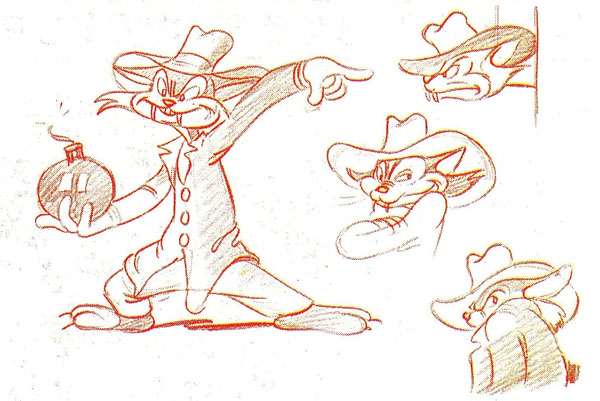
In his cartoons released in late 1942 and early 1943, McCabe’s chief background artist was Dave Hilberman, a former Disney striker who came to the studio after leaving Screen Gems. Hilberman’s backgrounds (The Daffy Duckaroo, The Impatient Patient, Confusions of a Nutzy Spy, Hop and Go) displayed graphic, stylized forms considered experimental in the early 1940s, and which he later implemented as he helped establish the burgeoning UPA studio. McCabe’s story men consisted of Melvin “Tubby” Millar and Don Christensen, who would often team up in the films.
Around November 1942, McCabe was drafted into the Army, assigned to the Army Air Corps Training Film Unit and also served in the First Motion Picture Unit at Fort Roach, which Rudy Ising commandeered. (Tokio Jokio credits him as “Cpl. Norman McCabe.”)
 After World War II, by law, servicemen were able to be re-hired at their old jobs upon their return. However, while the Warners animation department made allowance for various animators from the service, the studio had no place to put McCabe. He managed to find illustration work, drawing for Capitol Records’ Bozo and His Rocket Ship, a “Record-Reader” released in 1947. In the 1950s, McCabe found himself working for various television commercial studios such as Swift-Chaplin Productions and Telemation. He worked as an animation director for All Scope Pictures, Inc., a commercial film division for 20th Century Fox from 1958 until the early 1960s.
After World War II, by law, servicemen were able to be re-hired at their old jobs upon their return. However, while the Warners animation department made allowance for various animators from the service, the studio had no place to put McCabe. He managed to find illustration work, drawing for Capitol Records’ Bozo and His Rocket Ship, a “Record-Reader” released in 1947. In the 1950s, McCabe found himself working for various television commercial studios such as Swift-Chaplin Productions and Telemation. He worked as an animation director for All Scope Pictures, Inc., a commercial film division for 20th Century Fox from 1958 until the early 1960s.
McCabe went back into theatrical cartoons when he was hired at DePatie-Freleng as an animator and director (Super 6) in the 1960s. A large number of studios producing theatricals and television animation, either working as an animator or various directorial duties soon followed throughout the remainder of his career in the 1960s up to the 1990s—Filmation, Playhouse Pictures, Pantomime Pictures (Sky Hawks), Ralph Bakshi (Fritz the Cat), Ruby-Spears, Sunbow Productions, Henson Associates (Muppet Babies), Murakami-Wolf-Swenson (Teenage Mutant Ninja Turtles), and Film Roman (Bobby’s World).
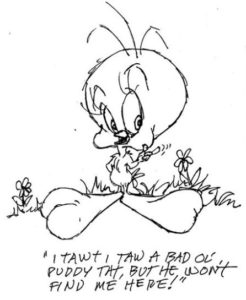 In the 1980s, McCabe returned to Warner Bros. to animate on Greg Ford and Terry Lennon’s The Duxorcist (1987) and Night of the Living Duck (1988). Around 1989, Warner Bros., along with Steven Spielberg’s Amblin Television, produced Tiny Toon Adventures, where McCabe was hired as a timing director. (He directed at least one segment, “Lifeguard Lunacy.”) He continued to work in the animation industry as a sheet timer on various Warners-Amblin shows such as Animaniacs, Taz-Mania, Freakazoid, and The Sylvester and Tweety Mysteries. When Greg Duffell met McCabe briefly at the Warner Bros. Television Animation building circa 1991, “I was struck by his appearance. He was dressed in blue jeans and a blue shirt and running shoes. His hair was grey and cut in a manner reminiscent of Moe Howard [of The Three Stooges]. For a man of advanced years, he was remarkably spry.” Mike Kazaleh, a writer and storyboard artist for Tiny Toons, said that Norm “was a very nice man, very good humored and friendly. He was enormously talented, and I would occasionally hang out in his room just to watch him draw.”
In the 1980s, McCabe returned to Warner Bros. to animate on Greg Ford and Terry Lennon’s The Duxorcist (1987) and Night of the Living Duck (1988). Around 1989, Warner Bros., along with Steven Spielberg’s Amblin Television, produced Tiny Toon Adventures, where McCabe was hired as a timing director. (He directed at least one segment, “Lifeguard Lunacy.”) He continued to work in the animation industry as a sheet timer on various Warners-Amblin shows such as Animaniacs, Taz-Mania, Freakazoid, and The Sylvester and Tweety Mysteries. When Greg Duffell met McCabe briefly at the Warner Bros. Television Animation building circa 1991, “I was struck by his appearance. He was dressed in blue jeans and a blue shirt and running shoes. His hair was grey and cut in a manner reminiscent of Moe Howard [of The Three Stooges]. For a man of advanced years, he was remarkably spry.” Mike Kazaleh, a writer and storyboard artist for Tiny Toons, said that Norm “was a very nice man, very good humored and friendly. He was enormously talented, and I would occasionally hang out in his room just to watch him draw.”
As many peers who have worked with McCabe have stated, he was more valuable to the studio than his job description suggested. Tom Minton, one of the key creative artists for Warner Bros. Television Animation, recalled hiring McCabe on The Sylvester and Tweety Mysteries: “It was great having someone on staff with that kind of institutional history and memory, which, on occasion, the crew would tap when we got stuck. I recall one very long afternoon early in the pre-production when everyone was exhausted in terms of the most effective way to end a particular story and Norm, who had said nothing for two hours, piped up in his laconic manner of speech with ‘Well, whenever Tex [Avery] would get stuck, he’d just cut to a wide angle on the theater, the crowd watching the cartoon, and do a gag about being stuck!’ While we couldn’t do that per se in that story situation, it helped unlock the mental block that everyone had been struggling against. It was almost like having Tex or Bob Clampett or any of the legendary WB directors, right there in our midst!”
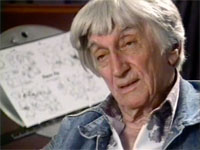 Evidently, McCabe spoke highly of Bob Clampett during his time at the Warners but he detested the black-and-white Looney Tunes he directed in the 1940s. Mark Kausler recalled during a showcase at the ASIFA office in North Hollywood, he “seemed embarrassed that we were showing them.” McCabe passed away on January 17, 2006 at the age of 94, as the last Warner Bros. director during the Golden Age. Almost all of McCabe’s 1940s cartoons as a director are rife with topical wartime references, which often differentiated them from WB’s other directorial units in later generations. However, all of his films are now easily accessible since they are in the public domain. His legacy in the animation industry has not been forgotten upon his passing. As Tom Minton shared, “Other Golden Age Warner Bros. directors might have had more flash or been more erudite, but there was no gentler soul who filled that job description than Norman McCabe.”
Evidently, McCabe spoke highly of Bob Clampett during his time at the Warners but he detested the black-and-white Looney Tunes he directed in the 1940s. Mark Kausler recalled during a showcase at the ASIFA office in North Hollywood, he “seemed embarrassed that we were showing them.” McCabe passed away on January 17, 2006 at the age of 94, as the last Warner Bros. director during the Golden Age. Almost all of McCabe’s 1940s cartoons as a director are rife with topical wartime references, which often differentiated them from WB’s other directorial units in later generations. However, all of his films are now easily accessible since they are in the public domain. His legacy in the animation industry has not been forgotten upon his passing. As Tom Minton shared, “Other Golden Age Warner Bros. directors might have had more flash or been more erudite, but there was no gentler soul who filled that job description than Norman McCabe.”
Next week’s post will feature another unsung animator/director, who worked at Disney and Warner Brothers…
(Thanks to Michael Barrier, Mark Kausler, Joe Torvicia, Jim Korkis, Tom Minton, Greg Duffell, Mike Kazaleh and Charles Brubaker for their help.)


 DEVON BAXTER is a film restoration artist, video editor, and animation researcher/writer currently residing in Pennsylvania. He also hosts a
DEVON BAXTER is a film restoration artist, video editor, and animation researcher/writer currently residing in Pennsylvania. He also hosts a 




















































































Here’s a fun little throwback. Cartoon Network profiled McCabe decades back on their ToonHeads showcase:
https://www.youtube.com/watch?v=wkOdqHb84kA
My vote for McCabe’s strongest cartoon is CONFUSIONS OF A NUTZY SPY. I see elements of Tashlin and Jones in there, even if not as refined.
For me, it’s a tie between “Daffy’s Southern Exposure” and “The Daffy Duckaroo” as being my favorite McCabe Looney Tune.
I lived at Fernwood and Van Ness for a while- in Louis B. Mayer’s house across the street from the studio. I only just recently figured out that was the home of Termite Terrace. I wish I had known when I was still there!
Sad that not more people know of Norm MacCabe, especially since not everyone is interested in black and white cartoons and the fact that most of MacCabe’s cartoons haven’t aged well (namely, the heavier WWII-based ones like Confusions of a Nutzy Spy, The Ducktators, and every PC person’s worst nightmare — next to the Censored Eleven — Tokio Jokio).
Norm McCabe’s drawing style as a director looked a little different from the in house style at the time, such as the doctor from The Impatient Patient and the characters from Gopher Goofy.
I do agree that Confusions of a Nutsy Spy was one of his best films; the timing and editing is definitely a foreshadow of Tashlin directing the unit. Who’s Who At The Zoo had some great gags; I like how he dives straight into the visual gags during the opening narration, thus wasting no time.
Looking forward to this series. If only WB preserved the animation drafts and other documents so McCabe’s (and other talented animators’) style and contributions could be more thoroughly analyzed.
He was very kind to write a response letter to my dissertation questions.
Hobby Horse Laffs has my all-time favorite Carl Stalling gag, the man who imitates musical instruments (” I was cheatin”).
McCabe did get to do a little color animation on Clampett’s first two Merrie Melodies, before Bob took over Avery’s unit. The ‘Java Jive’ number (with Mel doing his Eddie Anderson voice) was probably the best part of his first cartoon , “”Robinson Crusoe, Jr.”, but overall, Norm and his writers seemed more comfortable working with Daffy and mirroring the Schlesinger house style than with the other efforts (and not having access to the studio’s best writers no doubt hurt here).
It’s too bad that McCabe’s work is marred by WWII propaganda (forget black and white); his WB cartoons are more than on a par with the other directors.
I don’t necessarily think the cartoons are marred by the propaganda considering the world was at war during that time period. If, as a viewer, one happens to know American history or have read about the emotional feelings between the nations during WWII, in addition to keeping things within the context of it’s time period, then seeing war themed cartoons shouldn’t cause any uncomfortable feelings…at least, for me, there’s nothing to be uncomfortable about but everyone’s reactions are different.
The only McCabe cartoon I’ve seen would be “Daffy’s Southern Exposure”, but it’s a great one.
“GOSH! We can’t find our hero!”
It’s interesting to think what other cartoons we could’ve gotten from McCabe had he not been drafted. He was clearly a talented director. My favorite of his was “Daffy’s Southern Exposure”, which, unlike “Tokio Jokio”, doesn’t feel dated at all and had some memorable set pieces. “Who’s Who in the Zoo” and “The Impatient Patient” are close seconds.
His one TTA short, “Lifeguard Lunacy”, was decent and had some serviceable pool-based gags, but it had the unfortunate luck of being placed after the strong season opener, “It’s All Relatives”. I wonder what the reasoning behind only giving him one short to direct was. Did he request it? Did the TTA staff give it to him as a tribute to his decades in animation? Or were they simply short-staffed and needed someone, anyone, to take command of it?
Does anyone know what scenes he animated in Fritz the Cat?
Nice piece. You should try turning it into a video- since you are a video editor 🙂
I love this. This should be a great series.
However, it seemed to me that you left out a paragraph (or two) about his post war activities. You mentioned that before the war his style would help form UPA’s style — but you never exactly say when he worked there or in what capacity.
He also apparently did art for Pine’s Goofy Comics at least once in 1946, using his middle name:
https://box01.comicbookplus.com/viewer/7e/7e512443d42585d06228e9480954af32/23.jpg